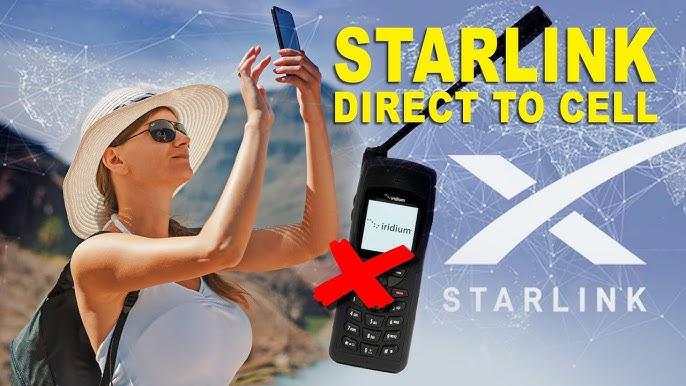News / National
Econet, are you ready for Starlink's direct-to-phone satellite offering?
24 Nov 2024 at 16:20hrs |
0 Views

Starlink, the SpaceX subsidiary that uses low-Earth orbit satellites to provide broadband internet services globally, is intensifying efforts to offer direct-to-smartphone connectivity.
According to a report by Techopedia, 13 of the 20 new satellites Starlink launched into orbit last week have direct-to-mobile capability.
"Direct-to-mobile is a new and experimental concept that … still faces a long road ahead for it to become fully viable," the report said.
Ten days prior to last week's launch, on 8 June, Starlink sent another 20 satellites into orbit, with 13 of them also capable of direct-to-mobile connectivity.
The drive by the Elon Musk-led company is to use its advanced launch capacity to establish dominance over other competitors in the direct-to-mobile market, which includes frontrunner Lynk Global, Amazon's Project Kuiper and AST SpaceMobile, a Texas, US-based satellite provider that is 5% owned by Vodacom Group parent, the UK's Vodafone Group.
Most companies launching low-Earth orbit satellites – with Project Kuiper as a notable exception – use SpaceX as their launch partner.
'Cellphone tower in space'
Direct-to-mobile functionality is based on the "cellphone tower in space" concept. According to the Starlink website, Starlink satellites with direct-to-mobile capability have an advanced "eNodeB" modem aboard that acts like a cellular tower in space, allowing network integration similar to a standard roaming partner.
"Direct-to-cell works with existing LTE phones wherever you can see the sky. No changes to hardware, firmware or special apps are required, providing seamless access to text, voice and data," said the Starlink website.
In January, Starlink confirmed it had successfully tested text messaging on its platform using T-Mobile's 4G/LTE spectrum. It has since expanded its partner network to include Optus (Australia), Rogers (Canda), One NZ (New Zealand), Salt (Switzerland) and Entel (Chile and Peru) – gradually expanding its geographical footprint. Higher-bandwidth services, including an internet-of-things service, are expecting to be launched in 2025.
"Operators in our network have access to reciprocal global access that allows their users to access the service when they travel to one of our partner countries. There is incredible demand and high interest in this programme, and handset providers and mobile operators alike are eager to test and participate in a successful rollout," said Starlink.
Starlink still has not communicated a launch date for its South African launch, even as telecommunications regulators in neighbouring countries Eswatini and Mozambique have already licensed the service.
According to a report by Techopedia, 13 of the 20 new satellites Starlink launched into orbit last week have direct-to-mobile capability.
"Direct-to-mobile is a new and experimental concept that … still faces a long road ahead for it to become fully viable," the report said.
Ten days prior to last week's launch, on 8 June, Starlink sent another 20 satellites into orbit, with 13 of them also capable of direct-to-mobile connectivity.
The drive by the Elon Musk-led company is to use its advanced launch capacity to establish dominance over other competitors in the direct-to-mobile market, which includes frontrunner Lynk Global, Amazon's Project Kuiper and AST SpaceMobile, a Texas, US-based satellite provider that is 5% owned by Vodacom Group parent, the UK's Vodafone Group.
Most companies launching low-Earth orbit satellites – with Project Kuiper as a notable exception – use SpaceX as their launch partner.
'Cellphone tower in space'
Direct-to-mobile functionality is based on the "cellphone tower in space" concept. According to the Starlink website, Starlink satellites with direct-to-mobile capability have an advanced "eNodeB" modem aboard that acts like a cellular tower in space, allowing network integration similar to a standard roaming partner.
"Direct-to-cell works with existing LTE phones wherever you can see the sky. No changes to hardware, firmware or special apps are required, providing seamless access to text, voice and data," said the Starlink website.
In January, Starlink confirmed it had successfully tested text messaging on its platform using T-Mobile's 4G/LTE spectrum. It has since expanded its partner network to include Optus (Australia), Rogers (Canda), One NZ (New Zealand), Salt (Switzerland) and Entel (Chile and Peru) – gradually expanding its geographical footprint. Higher-bandwidth services, including an internet-of-things service, are expecting to be launched in 2025.
"Operators in our network have access to reciprocal global access that allows their users to access the service when they travel to one of our partner countries. There is incredible demand and high interest in this programme, and handset providers and mobile operators alike are eager to test and participate in a successful rollout," said Starlink.
Starlink still has not communicated a launch date for its South African launch, even as telecommunications regulators in neighbouring countries Eswatini and Mozambique have already licensed the service.
Source - online
Join the discussion
Loading comments…
















